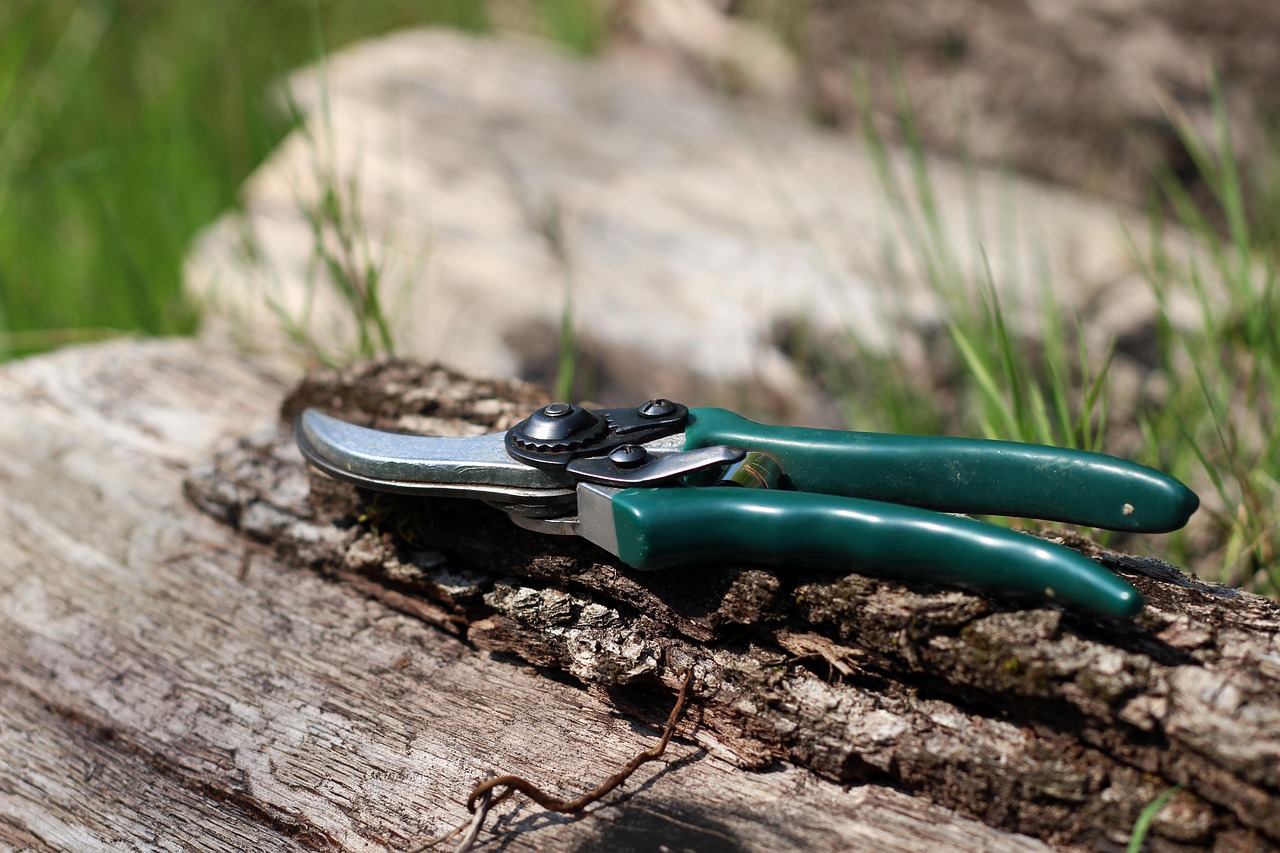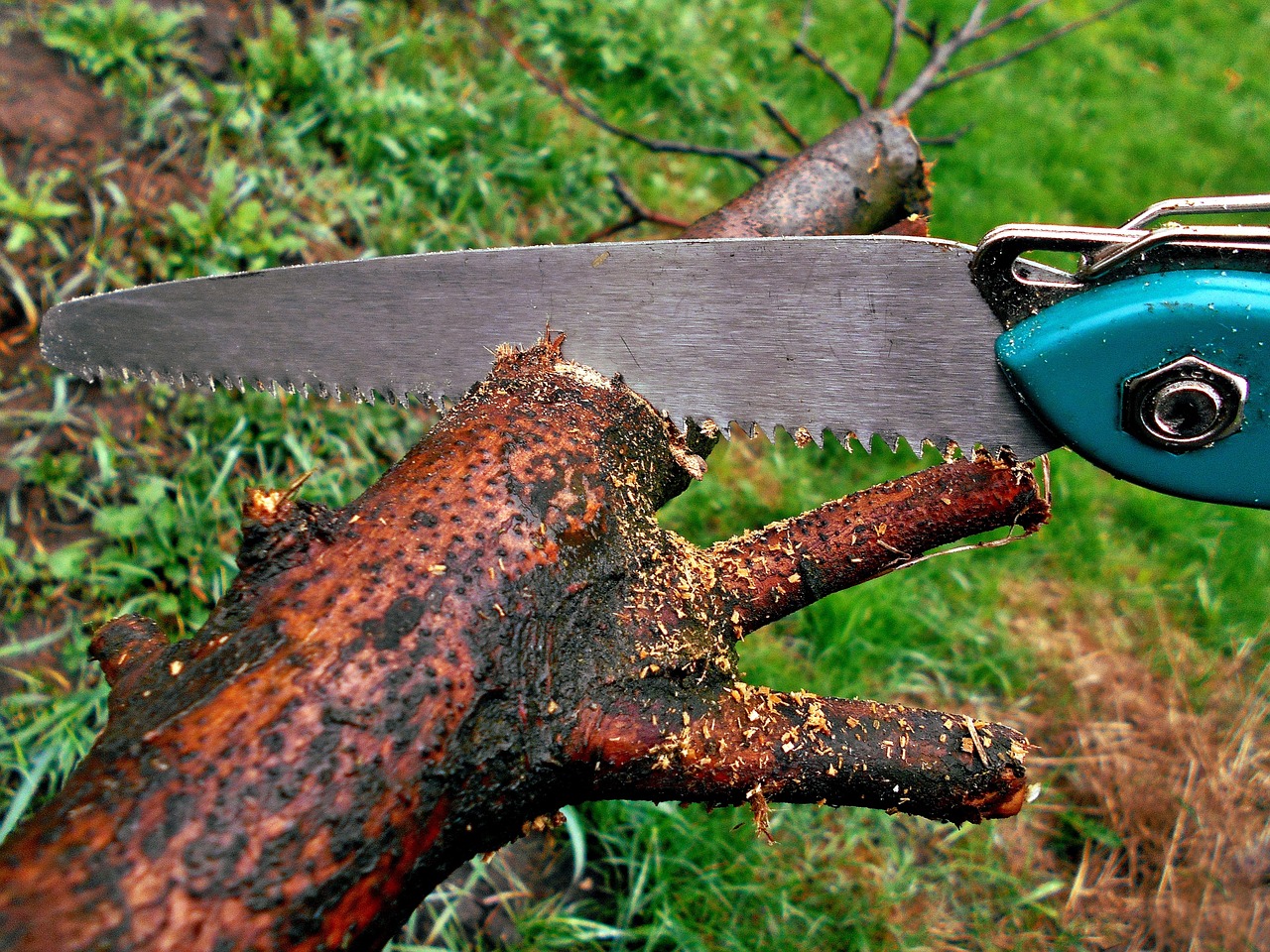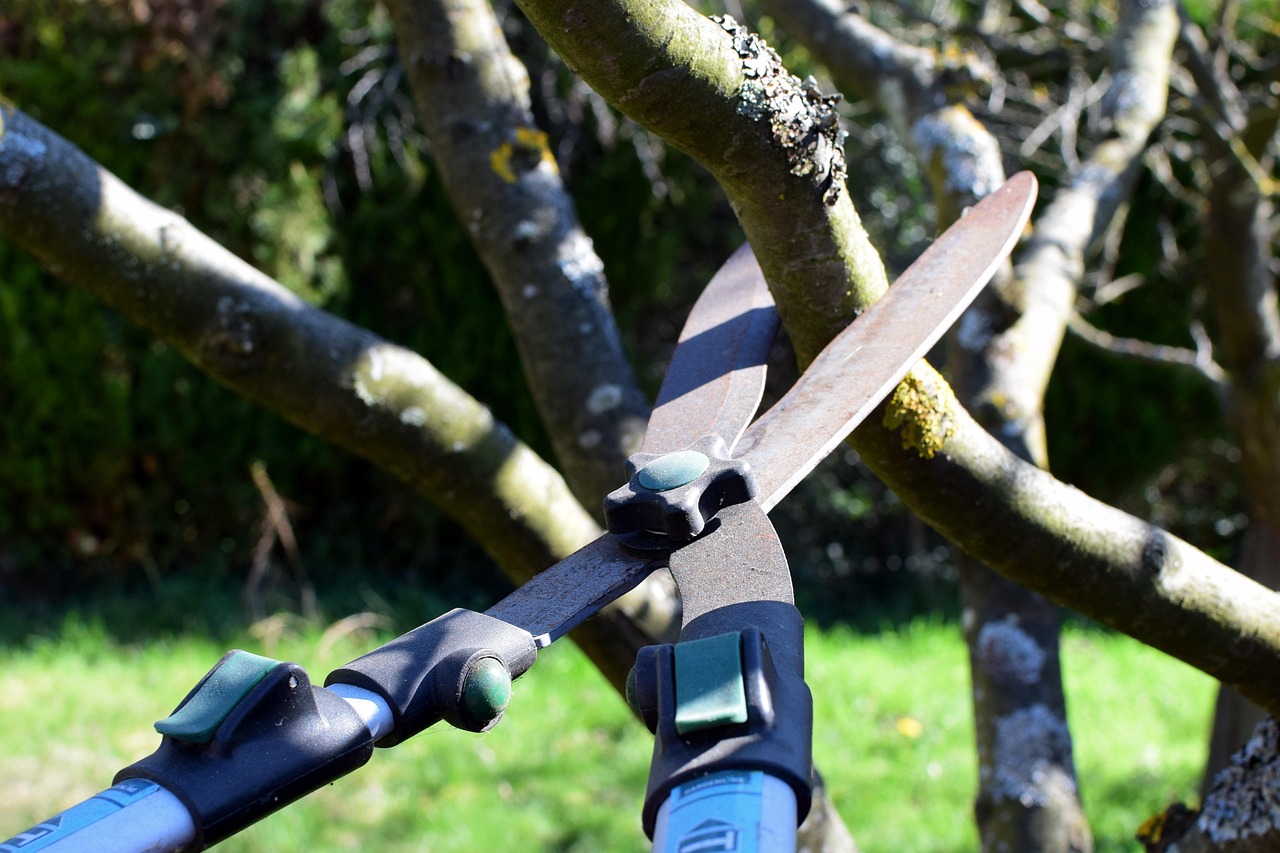Many myths surround the pruning of flowering trees. Common misconceptions include beliefs that pruning always leads to more blooms, that it should only be done in spring, and that certain trees should never be pruned. Understanding these myths is essential for effective tree care.
Understanding Pruning and Its Importance
Pruning is a critical practice in maintaining the health and beauty of flowering trees. It involves removing specific parts of a tree, such as branches or buds, to improve its growth and flowering potential. Proper pruning enhances air circulation, light penetration, and overall aesthetics. However, it is essential to understand the best practices for pruning to avoid damaging the tree.

Many gardeners and tree enthusiasts rely on traditional practices passed down through generations. Unfortunately, some of these practices are based on misconceptions rather than science. This section will explore several popular myths about pruning flowering trees, providing clarity on each one.
Common Myths About Pruning Flowering Trees
Here are some prevalent myths that can lead to improper pruning techniques:
- Myth 1: Pruning will always increase flowering.
- Myth 2: Spring is the only time to prune flowering trees.
- Myth 3: You should never prune trees that flower in spring.
- Myth 4: Severe pruning is always beneficial.
- Myth 5: All trees respond the same way to pruning.
Debunking the Myths
Let’s take a closer look at each myth and provide factual information to counter them.

Myth 1: Pruning Will Always Increase Flowering
This myth suggests that by pruning a tree, you will automatically encourage more blooms. While pruning can help promote new growth, it does not guarantee an increase in flowers. The timing and method of pruning matter significantly. For example, over-pruning may remove buds that would have produced flowers.
Myth 2: Spring Is the Only Time to Prune Flowering Trees
Many believe that spring is the best or only time to prune flowering trees. In reality, the optimal time for pruning depends on the type of tree. Some trees benefit from pruning in late winter or early summer. Pruning during dormancy can minimize stress on certain species, while others may require summer pruning to manage growth effectively.
Myth 3: You Should Never Prune Trees That Flower in Spring
This myth stems from the concern that pruning will eliminate flowering for the current season. While it is true that many spring-flowering trees bloom on old wood, careful pruning can still be beneficial. By selectively removing dead or diseased branches after flowering, you can improve the health and structure of the tree without sacrificing blooms for the next season.

Myth 4: Severe Pruning Is Always Beneficial
Some believe that more aggressive pruning leads to better growth and flowering. However, severe pruning can shock the tree and reduce its health. It can lead to excessive new growth that may not be able to support blooms. Gentle, gradual pruning is often more effective in promoting healthy growth.
Myth 5: All Trees Respond the Same Way to Pruning
This myth overlooks the unique needs of different tree species. Each type of tree has specific requirements regarding when and how much to prune. For instance, deciduous trees may respond differently than evergreen varieties. Understanding these differences is crucial for effective tree care.
The Benefits of Proper Pruning
Despite the myths surrounding pruning, proper techniques offer numerous benefits:

- Enhances air circulation and light penetration.
- Encourages healthy growth and structure.
- Improves aesthetics and shape of the tree.
- Reduces risks of disease and pest infestations.
- Promotes safety by removing dead or weak branches.
Key Considerations for Pruning Flowering Trees
When planning to prune flowering trees, consider the following factors:
| Factor | Description |
|---|---|
| Type of Tree | Identify whether it flowers on old or new wood. |
| Time of Year | Select an appropriate season based on species. |
| Pruning Technique | Use correct cuts to minimize stress on the tree. |
| Tree Health | Assess overall health before deciding on pruning. |
By understanding these factors and debunking common myths, gardeners can make informed decisions about how to care for their flowering trees effectively.
Common Types of Flowering Trees and Their Pruning Needs
Understanding the different types of flowering trees is crucial for effective pruning. Each species has unique characteristics and requirements. This section will detail some common flowering trees and their specific pruning needs, helping gardeners tailor their techniques accordingly.
Deciduous Flowering Trees
Deciduous flowering trees lose their leaves in the fall and bloom in the spring or summer. Examples include cherry, dogwood, and magnolia trees. These trees generally require different pruning techniques based on their flowering habits.
- Cherry Trees: These trees typically bloom on old wood. Pruning should occur immediately after flowering to avoid cutting off next year’s buds.
- Dogwood Trees: Dogwoods can benefit from light pruning to remove dead or diseased branches. This should be done right after they bloom.
- Magnolia Trees: Magnolias also flower on old wood. Prune them in late spring after blooming to maintain their shape without sacrificing blooms.
Evergreen Flowering Trees
Evergreen flowering trees retain their leaves year-round and can produce flowers, such as certain varieties of holly or pine. These trees have unique pruning requirements.
- Holly Trees: Hollies can be pruned just after their flowering season. A light trim helps maintain shape without affecting fruit production.
- Pine Trees: Pine trees usually do not require extensive pruning. Remove only dead or broken branches, ideally during late winter.
Small Flowering Trees
Small flowering trees, such as crabapple or flowering pear trees, often have different pruning needs compared to larger varieties. Their size allows for easier maintenance and shaping.
- Crabapple Trees: These trees benefit from regular pruning to promote air circulation and remove unwanted growth. Prune in late winter before new growth begins.
- Flowering Pear Trees: Similar to crabapples, flowering pears should be pruned in winter. Focus on removing any crossing branches to improve structure.
The Role of Timing in Pruning
Timing is one of the most critical factors when it comes to pruning flowering trees. Pruning at the wrong time can adversely affect flowering and overall tree health. Here are some essential timing strategies:
Timing Based on Blooming Periods
The timing of pruning should correlate with the blooming period of the specific tree species. Generally, there are two categories based on when they bloom:
- Trees that Bloom in Spring: These trees typically set their flower buds in the previous growing season. It is crucial to prune them right after they bloom, ensuring you do not remove next year’s buds.
- Trees that Bloom in Summer: These trees, such as crepe myrtles, develop their flower buds on new wood. Pruning can occur in late winter or early spring before new growth starts.
Seasonal Considerations for Tree Health
The seasons also play a vital role in the tree’s health and recovery from pruning. Here are some seasonal considerations:
- Winter: This is often the best time for pruning many species since they are dormant. It reduces stress and allows for healing before the growing season.
- Spring: Pruning should be limited during this time as trees are actively growing. However, once blooming concludes, you can make necessary cuts.
- Summer: This is a good time to prune summer-flowering trees. It provides a chance to shape the tree and remove any unwanted growth.
- Fall: Avoid heavy pruning in the fall as it may stimulate new growth that won’t have time to harden off before winter.
Tools and Techniques for Pruning Flowering Trees
The right tools and techniques are essential for effective pruning. Using improper tools can damage the tree and lead to poor recovery. Here are some recommended tools and techniques:
Essential Pruning Tools
A variety of tools are available for pruning flowering trees. Here are some commonly used tools:
- Hand Pruners: Ideal for small branches up to ¾ inch thick. They provide precision and control for clean cuts.
- Loppers: These are suitable for branches up to 2 inches thick. Loppers provide more leverage than hand pruners.
- Saws: Use a pruning saw for larger branches. A clean cut is vital, so ensure the blade is sharp.
- Hedge Shears: Suitable for shaping and trimming smaller trees or shrubs, hedge shears help maintain a desired shape.
Pruning Techniques
The following techniques can help ensure effective pruning:
- Crown Thinning: This technique involves selectively removing branches to improve light penetration and air circulation within the tree’s canopy.
- Crown Raising: Removing lower branches can raise the crown of the tree, allowing more space beneath it while preserving its overall structure.
- Crown Reduction: This involves shortening branches to reduce the overall size of the tree while maintaining its natural shape.
By understanding the types of flowering trees, timing for pruning, and proper techniques, gardeners can ensure their trees remain healthy and vibrant, debunking myths along the way.
Signs That Your Flowering Tree Needs Pruning
Recognizing when to prune flowering trees is essential for their health and vitality. Certain signs indicate that a tree may need attention, whether for aesthetic purposes or overall health. Understanding these signs can help ensure your trees thrive.
Indicators of Poor Tree Health
Several indicators suggest that a flowering tree may be unhealthy and require pruning:
- Dead or Diseased Branches: Branches that appear dead or have signs of disease should be removed promptly to prevent the spread of pathogens.
- Crossing Branches: When branches cross or rub against each other, it can cause wounds and lead to infections. Pruning these branches can improve overall structure.
- Weak or Broken Limbs: Limbs that are weak or broken can pose safety risks. Removing them helps protect the tree and surrounding areas.
- Pest Infestation: If you notice pests on your tree, pruning infested areas can help manage the problem and promote recovery.
Aesthetic Considerations
Beyond health indicators, aesthetic reasons also warrant pruning:
- Overcrowding: If the canopy is too dense, light penetration will be limited. Thinning out branches can enhance the tree’s appearance and health.
- Shape Maintenance: Many gardeners prefer a specific shape for their trees. Regular pruning helps maintain the desired form and encourages balanced growth.
- Size Management: If a tree has outgrown its space, crown reduction can help control its size while still allowing for healthy growth.
The Pruning Process: Step-by-Step Guide
Proper pruning requires a systematic approach. Following a step-by-step process can help ensure that the job is done effectively and safely.
Step 1: Assess the Tree
Before starting, take a moment to assess the tree’s health and structure. Look for any dead, diseased, or damaged branches. Make a plan for which branches need to be pruned based on your observations.
Step 2: Gather Your Tools
Ensure you have all necessary tools ready. This includes hand pruners, loppers, and saws, along with safety gear such as gloves and eyewear. Proper tools help make clean cuts and reduce stress on the tree.
Step 3: Make Clean Cuts
When pruning, always make clean cuts. Here are some tips:
- Angle Cuts: Make cuts at a slight angle to encourage proper healing and reduce water accumulation on cut surfaces.
- Avoid Topping: Topping is the practice of cutting the tops off trees, which can lead to weak regrowth. Instead, prune back to a lateral branch.
- Cut Back to Healthy Wood: Always prune back to healthy wood to promote healing and prevent disease.
Step 4: Remove Excess Growth
Focus on removing excess growth while maintaining the tree’s natural shape. Prioritize removing:
- Dead or diseased branches
- Crowded or crossing branches
- Weak or broken limbs
Step 5: Clean Up
After pruning, clean up the site by removing clippings and debris. This helps prevent pest infestations and diseases. Dispose of any diseased wood properly to avoid spreading pathogens.
Aftercare for Pruned Flowering Trees
After pruning, caring for your flowering trees is critical to ensure they recover well. Here are some aftercare tips:
Watering
Ensure the tree receives adequate water after pruning. This helps it recover from stress and promotes new growth. However, avoid overwatering as it can lead to root rot.
Fertilization
A light application of fertilizer can support recovery, especially if the tree shows signs of nutrient deficiency. Use a balanced fertilizer suitable for flowering trees.
Pest Management
Keep an eye out for pests after pruning. Monitor for any signs of infestation and take appropriate action if needed. Early intervention is key to managing pests effectively.
Understanding Tree Anatomy in Relation to Pruning
A fundamental understanding of tree anatomy can significantly enhance your pruning efforts. Recognizing different parts of a tree and their functions allows for more informed decisions during pruning.
Main Components of a Flowering Tree
| Component | Description |
|---|---|
| Crown | The upper part of the tree, consisting of branches and leaves. |
| Bark | The protective outer covering of the tree that helps prevent disease. |
| Branches | The limbs extending from the trunk that support leaves and flowers. |
| Trunk | The central stem that supports the crown and connects roots to leaves. |
| Roots | The underground part that anchors the tree and absorbs water and nutrients. |
A deeper understanding of these components allows for targeted pruning that supports the overall health and aesthetics of flowering trees. By considering tree anatomy during pruning, gardeners can make informed choices that enhance their trees’ longevity and beauty.
Additional Considerations for Pruning Flowering Trees
Beyond the myths, types, and techniques discussed, there are several additional considerations that can enhance the effectiveness of pruning flowering trees. These aspects can help ensure that the trees not only survive but thrive after being pruned.
Understanding Local Climate and Soil Conditions
Climate and soil conditions play a significant role in tree health. Understanding these factors can influence how and when to prune:
- Climate: Different climates affect the growth patterns of flowering trees. In regions with harsh winters, late winter pruning can be beneficial, while milder climates may allow for more flexibility.
- Soil Quality: Healthy soil promotes strong root systems, which are critical for tree health. If soil conditions are poor, trees may require different pruning approaches to compensate for their weakened state.
Recognizing Stress Factors
Flowering trees can experience stress from various sources. Recognizing these stress factors can guide your pruning decisions:
- Environmental Stress: Drought, flooding, and extreme temperatures can affect tree health. During these times, it may be wise to postpone heavy pruning until the tree recovers.
- Pest Pressure: Trees under stress from pests may require more careful pruning to avoid exacerbating the problem. Monitor pest activity closely and consider consulting a professional if infestations are severe.
Professional Help vs. DIY Pruning
While many homeowners take on pruning tasks themselves, there are times when professional help is advisable:
- Large Trees: If a tree is too large or poses a safety risk, hiring a certified arborist is recommended. Professionals have the expertise to prune large trees safely and effectively.
- Disease Management: If a tree shows signs of significant disease or pests, consulting an expert can provide insights into proper care and treatment beyond pruning.
Final Thoughts
Pruning flowering trees is an essential aspect of maintaining their health and beauty. By debunking common myths and understanding the specific needs of various tree species, gardeners can make informed decisions that promote longevity and vibrancy.
Key takeaways include recognizing the signs that indicate a tree needs pruning, understanding the importance of timing based on flowering periods, and utilizing proper tools and techniques. Additionally, being aware of local climate conditions and stress factors can significantly impact the effectiveness of pruning efforts.
Ultimately, whether you are an experienced gardener or a novice, embracing the knowledge surrounding flowering tree care will empower you to nurture your trees effectively. As you apply these principles to your gardening practices, you will contribute positively to the health of flowering trees in your landscape.
With the right approach, you can foster beautiful, thriving flowering trees that enhance your outdoor space for years to come. Remember that each tree is unique, and attentive care will yield the best results in your gardening journey.
